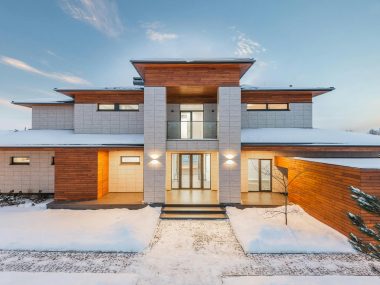When you’re in the market for a new home, securing a favourable mortgage rate can be just as crucial as finding the perfect kitchen or ideal neighbourhood. The interest rate on your mortgage not only influences your monthly payments but also has a significant impact on the total cost of your home over time.
How to Shop for a Mortgage Rate is a topic of immense importance, whether you’re a first-time homebuyer or a seasoned property investor.
What Factors Should I Consider When Shopping For A Mortgage Rate?
Before diving into mortgage shopping, it’s vital to consider several key factors that will dramatically affect the rate you can qualify for.
Credit score impact: Your credit score is the gatekeeper to favorable mortgage rates. The higher your score, the better your chances of securing a lower rate, making it important to know and possibly improve your credit before you begin shopping for a mortgage.
Down payment size: How much you’re able to put down upfront can also affect your mortgage rate. A substantial down payment not only decreases your loan-to-value ratio but may also reward you with a lower interest rate.
Loan term considerations: The length of your mortgage term plays a pivotal role in determining your interest rate. Shorter terms often translate to lower rates but come with heftier monthly payments.
Rate type preference: You’ll need to choose between a fixed-rate mortgage for payment stability or an adjustable-rate mortgage (ARM) for possibly lower initial payments.
Shop around: Don’t settle for the first offer. Explore multiple lenders to find the best rate and terms, considering both the interest rate and the APR for a clear picture of total loan costs.
Why These Factors Matter
Understanding the nuances of these factors can empower you as a consumer to make informed decisions that align with your financial goals.
Credit score impact: A credit score in the higher range can often lead to savings in the tens of thousands over the life of the loan.
Down payment size: A larger down payment often equates to lower risk for the lender, which can result in more favorable rates for the borrower.
Loan term considerations: Choosing the right term for your loan is a balance between manageable monthly payments and overall interest costs.
Rate type preference: Your risk tolerance and financial plans will inform whether a fixed-rate or an ARM is more suitable for your situation.
Shop around: Thoroughly shopping around can uncover varied rates and offers, highlighting the importance of comparison in securing the best mortgage deal.
Examples to Guide Your Journey
- Save money by improving your credit score with credit-building strategies such as timely bill payments and debt reduction.
- Explore options like conventional loans, which may offer attractive rates to buyers with a larger down payment.
- Consider how long you plan to stay in your home when choosing between a 15-year and a 30-year loan term.
- Use online mortgage calculators to compare monthly payments and total interest between fixed-rate and ARM options.
- Obtain rate quotes from at least three lenders and compare the Loan Estimate documents for a clear understanding of the costs and fees involved.
When shopping for a mortgage rate, it’s crucial to balance your current financial capacity with your future financial stability. Keep in mind that the lowest rate isn’t always the best deal, and total loan costs should be evaluated.
How Can I Find The Best Mortgage Rate For My Situation?
Identifying the most advantageous mortgage rate hinges upon a personalized approach that considers your unique financial situation and goals.
Shop around and compare rates: Cast a wide net to investigate various rates from different types of lenders to find the rate that best fits your financial situation.
Check your credit score and history: A comprehensive review of your credit standing can provide valuable insights and opportunities for improvement, ultimately affecting the rate you receive.
Consider the loan type and terms: Examine both fixed-rate and adjustable-rate mortgages and their respective terms to determine which aligns with your financial plan.
Negotiate with lenders: Don’t hesitate to haggle for the best possible deal, as lenders may match competing offers or reduce fees to win your business.
Be mindful of timing: Market forces fluctuate, so choose the best time to lock in a rate that is advantageous both now and for the future of your payments.
Unpacking the Search for the Best Rate
Looking deeper into these strategies reveals the importance of a proactive and informed approach to mortgage shopping.
Shop around and compare rates: Doing your homework could yield substantial savings, as rates and terms can vary significantly between lenders.
Check your credit score and history: Knowing where you stand in the eyes of lenders can help you understand your rate options or take action to enhance your credit profile.
Consider the loan type and terms: Analyze your financial outlook to choose a mortgage that not only meets your current needs but also protects your long-term interests.
Negotiate with lenders: Negotiation is an often-underused tool in mortgage shopping that can lead to better rates or lowered closing costs.
Be mindful of timing: Strategic timing in locking in your rate can protect you from market fluctuations and potentially save or cost you money depending on when you commit.
Bullet Points for a Successful Rate Hunt
- Obtain your credit report from all three major credit bureaus and correct any errors before starting your mortgage search.
- Use a mortgage comparison tool to quickly compare rates and terms offered by various lenders.
- Break down the differences between the loan types and consider speaking with a financial advisor to guide your selection.
- Prepare for negotiations by researching current mortgage rate trends and being ready to present competing offers.
- Set up rate alerts with online mortgage services to keep abreast of changes in the market.
By taking a proactive, detail-oriented approach, you can navigate the complex terrain of mortgage rates and secure a loan that complements your financial landscape.
What Is the Difference Between A Fixed-Rate Mortgage And An Adjustable-Rate Mortgage?
Understanding the distinction between a fixed-rate mortgage and an adjustable-rate mortgage is paramount when selecting a home loan that coincides with your financial planning and risk tolerance.
- A fixed-rate mortgage offers the comfort of consistent payments throughout the tenure of the loan, making it a safe choice for those who value predictability.
- An adjustable-rate mortgage, while potentially offering initial savings with a lower rate, carries the risk of rate and payment increases over time.
- Initially, ARMs may seem beneficial for their lower rates, particularly if you’re seeking short-term savings or plan to sell or refinance early.
- On the other hand, a fixed-rate mortgage typically appeals to those who intend to remain in their home over the long haul.
- The right choice depends on your financial situation, housing plans, and comfort level with the possibility of increasing payments over time.
Fixed vs. Adjustable: A Closer Look
The pros and cons of fixed-rate and adjustable-rate mortgages reveal a deeper layer of strategy in choosing the mortgage that aligns with your long-term home ownership plans.
- Fixed-rate mortgages are synonymous with stability, which may help homeowners with consistent budgeting and long-term planning.
- Adjustable-rate mortgages often cater to those looking to minimize initial costs, with an understanding that rates—along with monthly payments—could rise in the future due to market conditions.
- The initial savings with an ARM can be enticing for the short-term but bear in mind that future market conditions can be unpredictable.
- Those who select a fixed-rate mortgage often do so to avoid the stress of fluctuating interest rates, even if it means paying a slightly higher rate initially.
- Evaluating your financial goals and risk tolerance is key to deciding whether to lock in a fixed rate or take a chance with an adjustable rate.
Key Considerations When Choosing Your Mortgage Type
Familiarize yourself with the current interest rate environment to make an informed decision between fixed and adjustable rates.
Reflect on your plans for the property—will you stay long-term, or do you see it as a stepping stone to another home
Assess the potential financial impact of a rising interest rate with an ARM and whether your budget can accommodate this risk.
Factor in current market conditions and expert forecasts for interest rate trends to gauge the long-term implications of your mortgage choice.
Remember that no one can predict the future; choose a mortgage that you’re comfortable with regardless of how rates might change.
By recognizing these factors, you are better equipped to determine the mortgage rate type that will best serve your financial needs and homebuying aspirations.
How Often Do Mortgage Rates Change, And What Influences These Changes?
Mortgage rates are dynamic, responding to a host of economic indicators, policies, and global events. As a homebuyer, it’s critical to grasp the frequency and causes of rate changes to time your mortgage decision effectively.
- Mortgage rates can and do change daily, reflecting the ebbs and flows of economic data and investor sentiments.
- Central factors include the Federal Reserve’s policies, inflation trends, and the overall state of the economy, all of which can sway mortgage rates.
- Bond market dynamics, especially those involving U.S. Treasury bonds, often bear a direct correlation with the direction of mortgage rates.
- Unforeseen circumstances like geopolitical uncertainties or natural calamities can precipitate rapid shifts in mortgage rates.
- Lenders also adjust their rates based on internal objectives and the broader competitive landscape, adding another layer of complexity to these fluctuations.
Inside the Movements of Mortgage Rates
Delving into the variables that move mortgage rates reveals a complex interplay between economic indicators and market forces.
When the Federal Reserve alters its monetary policy—such as by changing the federal funds rate—it can either uplift or dampen mortgage rates.
Inflation is a critical economic metric that lenders monitor closely; higher inflation often leads to higher mortgage rates.
Bonds, particularly the 10-year Treasury note, are a bellwether for mortgage rate trends, with the yield on these securities influencing rates.
Major global and national events can prompt investors to shift their money into safer assets, affecting rates.
Lenders may alter rates as part of a strategy to attract more borrowers or in response to competitive pressures and cost considerations.
Examples of What Drives Rate Changes
- Economic releases, like employment reports and consumer price indexes, can lead to immediate changes in mortgage rates.
- The Federal Reserve meeting schedules and announcements are must-watch events for those seeking to predict rate movements.
- Stay appraised of global events, such as elections or trade negotiations, that could influence investor behavior and impact rates.
- Bond yields, particularly those of the 10-year Treasury note, are a valuable indicator to follow when seeking insight into potential mortgage rate changes.
- Regularly consult multiple lenders to gather up-to-date information on prevailing mortgage rates and any impending adjustments they may be considering.
For prospective homebuyers, a well-timed mortgage rate lock can save thousands over the life of the loan, thus understanding these factors is key to navigating this ever-shifting landscape.
When Should I Lock In A Mortgage Rate During The Home Buying Process?
The decision to lock in a mortgage rate is a strategic move that requires careful consideration of market conditions and your individual home buying process timeline.
- Begin by evaluating your timeline: A rate lock is most prudent once you’ve found a home to purchase and a closing date has been established.
- Stay vigilant to market trends, as interest rates can rise unpredictably, and securing a rate lock can hedge against such increases.
- Understand that rate locks typically last from 30 to 60 days; ensure your lock covers you until your closing date to prevent the need for a costly extension.
- Examine rate lock terms and policies from various lenders, as some may offer more advantageous conditions.
- Maintain communication with your lender throughout this process to determine the ideal time to lock in, considering both the market and your unique circumstances.
Timing Your Mortgage Rate Lock
The timing of your rate lock can significantly affect your mortgage costs, so you should approach this decision with as much information and foresight as possible.
Pinpoint your home-buying timeline so you can align your rate lock with your closing date, avoiding unnecessary rate lock extension fees.
Watch for signals that indicate rising interest rates, such as inflation concerns or Federal Reserve commentary, which might prompt an earlier rate lock.
Familiarize yourself with the specifics of your chosen lender’s rate lock policy, including the duration and any associated fees.
Evaluate interest rate trends over the weeks or months leading up to your purchase, and consult with your mortgage professional for tailored advice.
Open communication with your lender can help you exploit timing opportunities, potentially securing you a more favorable rate.
Rate Locking Strategy
- As your home search intensifies, consult your lender on the current rate environment and their expectations for near-term shifts.
- Consider locking in your rate if you are purchasing during a period of volatile interest rates or when rates are on an upward trend.
- Compare rate lock offers from different lenders, including their cost structure and any benefits attached to their lock-in policy.
- Discuss with your lender the implications of a rate lock, including the potential need for an extension if the closing is delayed.
- Track the mortgage rate trends closely as your search for a home progresses, and be prepared to act swiftly in a volatile market.
Wrapping up Your Mortgage Rate Guidance
In the journey of securing a mortgage, understanding “How to Shop for a Mortgage Rate” is tantamount to achieving a cost-effective and stress-free home buying experience. By arming yourself with knowledge and exercising a disciplined approach to rate shopping, credit management, and market timing, you can enhance your chances of snagging a mortgage that suits both your wallet and your dreams of homeownership.
Whether you’re drawn to the predictability of fixed-rate mortgages or the initial savings of ARMs, a clear grasp of your financial standing, market trends, and the nuances of mortgage products will serve you well.
And while mortgage rates dance to the tune of economic indicators and events, your proactive engagement with these factors can help you finesse the best rate possible for your most significant investment.
As you move toward this major milestone, bear in mind that no guide can supplant the personalized advice of a qualified mortgage professional. Their insights, matched with your research, can make the difference between a good mortgage rate and a great one.




